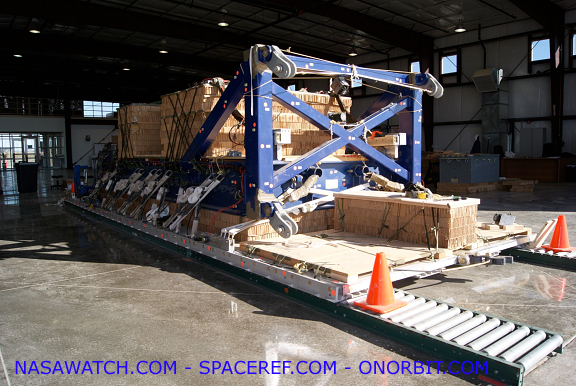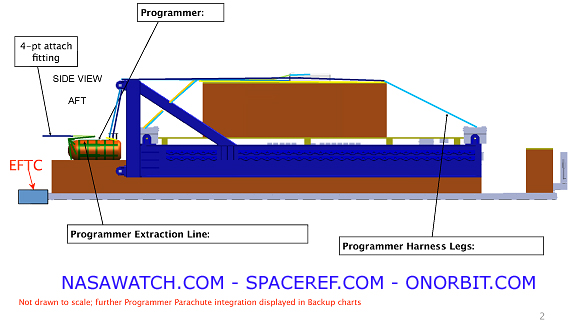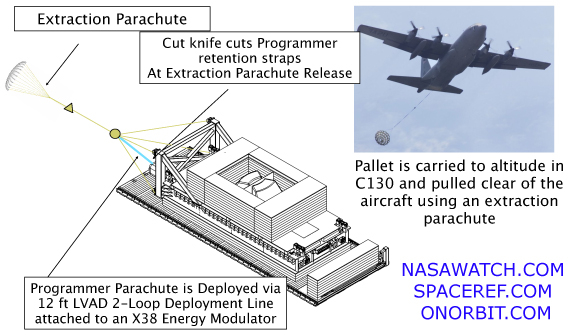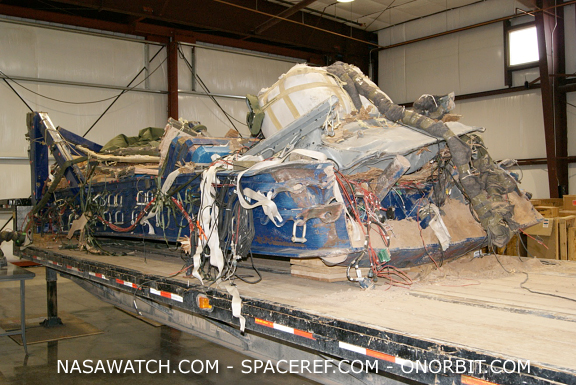Details of Constellation Program Parachute Test Emerge

Keith Cowing: On 9 February 2010 NASA conducted a test to validate an approach that would be used to test the parachutes for the Orion spacecraft. That test did not go according to plan. However, contrary to earlier stories and rumors, a mock up of an Orion spacecraft did not crash into the desert. Rather a large test sledge did.

Keith Cowing: On 9 February 2010 NASA conducted a test to validate an approach that would be used to test the parachutes for the Orion spacecraft. That test did not go according to plan. However, contrary to earlier stories and rumors, a mock up of an Orion spacecraft did not crash into the desert. Rather a large test sledge did.
During this test, an extraction parachute pulled a test assembly designed to simulate the drag and weight of Orion from a C-130 aircraft. The test was conducted at an altitude of 20,500 feet above the Army’s Yuma Proving Grounds in Arizona. The test assembly consists of a weight tub and platform. Something went wrong, the parachutes did not open, and the test assembly crashed on impact.
In a typical test scenario, the deployment of the parachutes occurs in sequence. The extraction chute pulls out the programmer chute. The programmer chute then orients the test assembly and places it into the desired orientation for the test. The programmer chute in turn pulls out the main parachutes and everything floats back to Earth.
During the recent test, it would seem that the extraction chute did not release from the test assembly platform. This prevented the programmer chute and thus the main chute systems from activating. The release of the extraction parachutes is performed by a attach mechanism known as an Extraction Force Transfer Coupling (EFTC) that is used as standard equipment on military drops – and is provided by the Yuma test range – not by NASA.
This test was the third in a series of three planned drop tests. These tests were being performed so as to learn more about multi-body separation techniques and to assess the performance of a new onboard avionics system. In addition this test was designed to allow observations to be made of the cluster performance of the two main parachutes.
The overall goal of these test was to try and better understand the problems that were encountered during a failed drop of the Orion Parachute Test Vehicle during 2008. That test surfaced issues in the test techniques that were used during that drop.
The damaged test assembly has been returned to NASA’s hangar at Yuma. The components that have been suspected as contributing to the failure have been returned to JSC so that engineers can determine the cause of the failure and what is required to prevent this from happening again.












